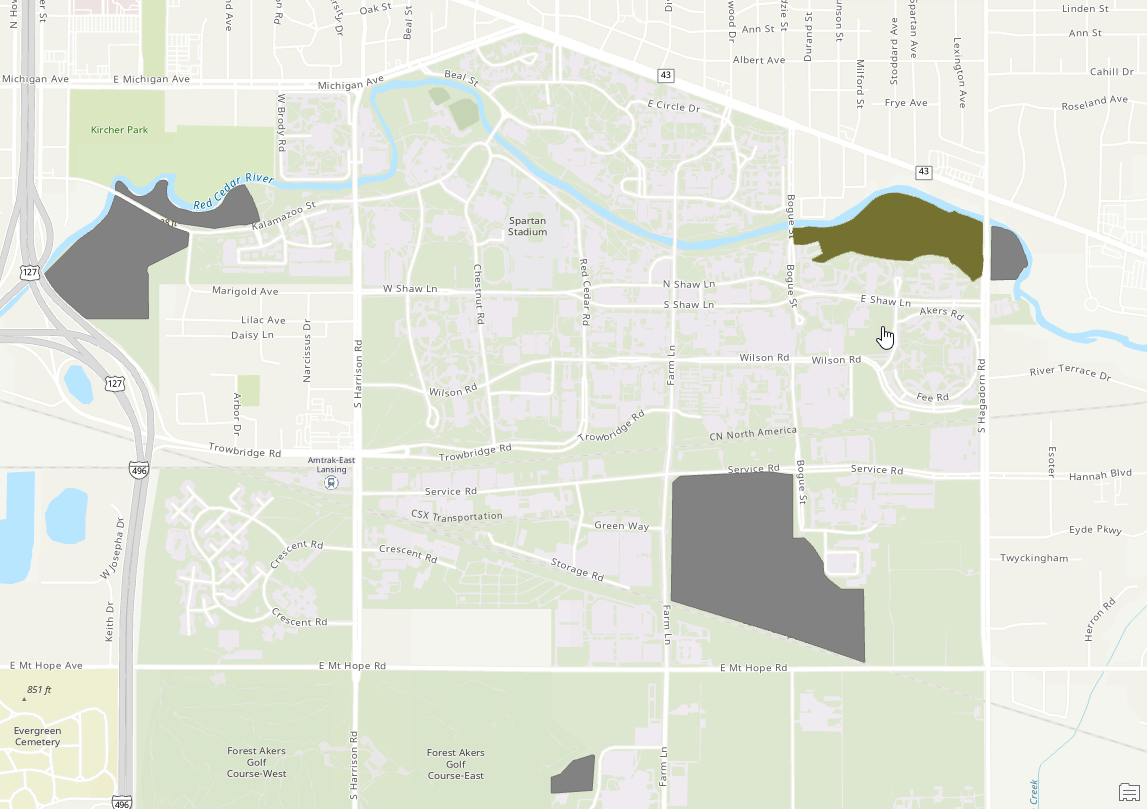The Sanford Natural Area is part of the original 676.57 acres of forested land purchased in 1855 from A.R. Burr of Lansing for the original Michigan Agricultural College campus. It was originally called North Woodlot, Woodlot No. 1 and later River Woodlot. In 1941 Professor Paul A. Herbert, Head of the Forestry Department, renamed it Sanford Woodlot, after Frank Hobart Sanford (1880-1938; B.S., 1904; M.S., 1913; Forestry faculty, 1906-1920; the second full-time forester appointed by the college). An interpretive trail map was published by the Division of Campus Park & Planning in 1974.
